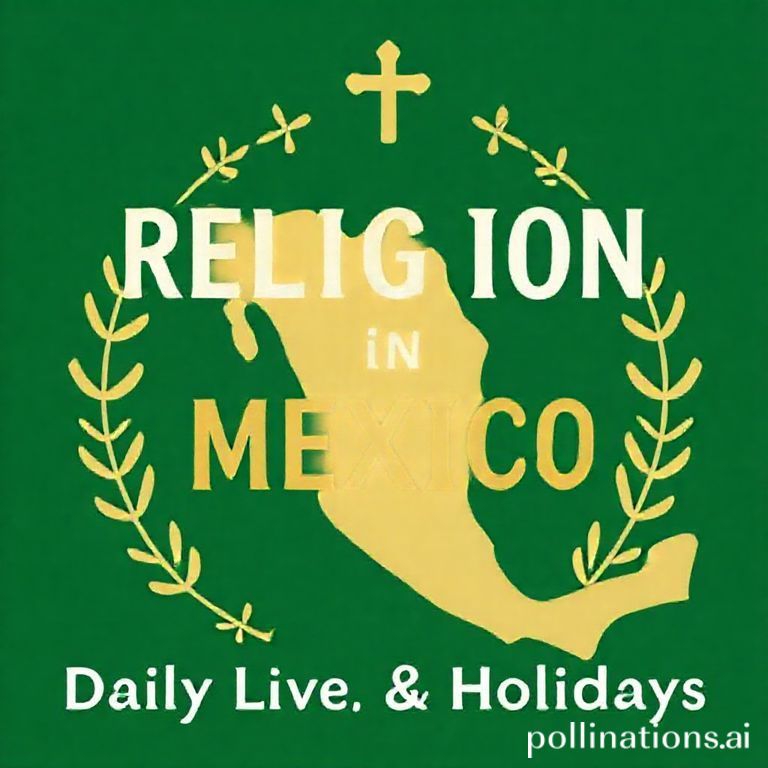Mexico, a land rich in culture and history, boasts a vibrant tapestry of traditions deeply interwoven with religious beliefs. While Catholicism is the predominant faith, the influence of indigenous spiritual practices and other Christian denominations adds layers of complexity and richness to the nation’s cultural landscape. This influence permeates many aspects of daily life, from family structures and community gatherings to the celebration of holidays and festivals.
Understanding the role of religion in Mexico provides a vital key to appreciating the country’s unique social fabric and cultural identity. Whether you’re a visitor seeking to immerse yourself in the local customs or a resident looking to deepen your understanding of Mexican society, exploring the influence of religion offers a profound insight into the heart and soul of this captivating nation.
The Catholic Heritage: A Cornerstone of Mexican Culture
Catholicism arrived in Mexico with the Spanish conquistadors in the 16th century and quickly became a dominant force, shaping the country’s social, political, and cultural institutions. Today, a large percentage of the population identifies as Catholic, and the Church continues to play a significant role in public life. Churches and cathedrals, often architectural masterpieces, are central landmarks in towns and cities across the country, serving not only as places of worship but also as community hubs.
Family Values and Social Norms
Catholic teachings have deeply influenced family values in Mexico, emphasizing the importance of close-knit families, respect for elders, and the sanctity of marriage. Religious ceremonies, such as baptisms, first communions, and weddings, are significant milestones in family life and are often celebrated with lavish festivities. Social norms surrounding morality, gender roles, and community responsibility are also often rooted in Catholic principles.
Indigenous Influences on Catholic Practices
While Catholicism is dominant, it’s important to recognize the syncretism that has occurred over centuries, blending indigenous spiritual beliefs with Catholic doctrines. This blending is evident in many religious festivals and traditions, where pre-Hispanic rituals and symbols are incorporated into Catholic celebrations. This unique fusion creates a distinct expression of faith that is characteristically Mexican.
Religious Holidays and Festivals: A Celebration of Faith and Culture
Mexico is renowned for its vibrant and colorful religious holidays and festivals, which are a testament to the country’s deep-seated faith and cultural pride. These celebrations are not merely somber religious observances; they are lively expressions of community spirit, often involving music, dance, elaborate costumes, and traditional foods.
Día de Muertos (Day of the Dead)
- Perhaps the most iconic Mexican holiday, Día de Muertos is a unique celebration honoring deceased loved ones.
- Families build altars adorned with flowers, candles, and offerings of food and drink to welcome the spirits of the departed.
- The holiday is a vibrant expression of remembrance and a celebration of the cycle of life and death.
Las Posadas
- Celebrated in the days leading up to Christmas, Las Posadas commemorates Mary and Joseph’s search for shelter in Bethlehem.
- Communities reenact the journey, going from house to house, singing traditional songs, and eventually finding refuge and celebrating with food and festivities.
Semana Santa (Holy Week)
- Semana Santa, or Holy Week, is a solemn and deeply religious period commemorating the Passion of Christ.
- Processions, religious services, and traditional rituals are held throughout the week, culminating in the celebration of Easter Sunday.
Fiestas Patronales (Patron Saint Festivals)
- Each town and city in Mexico has a patron saint, and their feast day is celebrated with a Fiesta Patronal.
- These festivals typically involve religious processions, traditional dances, music, food stalls, and other forms of entertainment.
Beyond Catholicism: Other Religious Influences
While Catholicism holds a dominant position, Mexico is also home to a growing number of other Christian denominations, including Protestant and Evangelical churches. These churches have gained popularity in recent years, particularly in certain regions of the country, and contribute to the religious diversity of Mexican society. Additionally, remnants of pre-Hispanic indigenous religions persist in some communities, and other faiths, such as Judaism and Islam, have a small presence in Mexico.
Conclusion
Religion’s impact on daily life and holidays in Mexico is undeniable. From the pervasive influence of Catholicism on family values and social norms to the vibrant celebrations of religious festivals, faith is deeply woven into the fabric of Mexican culture. Understanding this influence is essential for anyone seeking to appreciate the richness and complexity of this captivating nation. The blend of Catholic traditions, indigenous spiritual practices, and other religious influences creates a unique and ever-evolving cultural landscape that continues to shape the identity of Mexico.
If you found this article insightful, share it with your friends and family, and explore other fascinating aspects of life in Mexico on our blog!
IMAGE: A vibrant street scene in Oaxaca, Mexico, during Día de Muertos (Day of the Dead). The scene is filled with colorful decorations, including papel picado (cut paper banners) and marigolds. Families are gathered around elaborately decorated altars, offering food and drinks to the spirits of their deceased loved ones. People are dressed in traditional clothing, some with their faces painted as skulls (calaveras). The atmosphere is festive yet respectful, with a warm, orange glow from the candles and the setting sun. The style should be realistic and capture the rich cultural details of the celebration.


